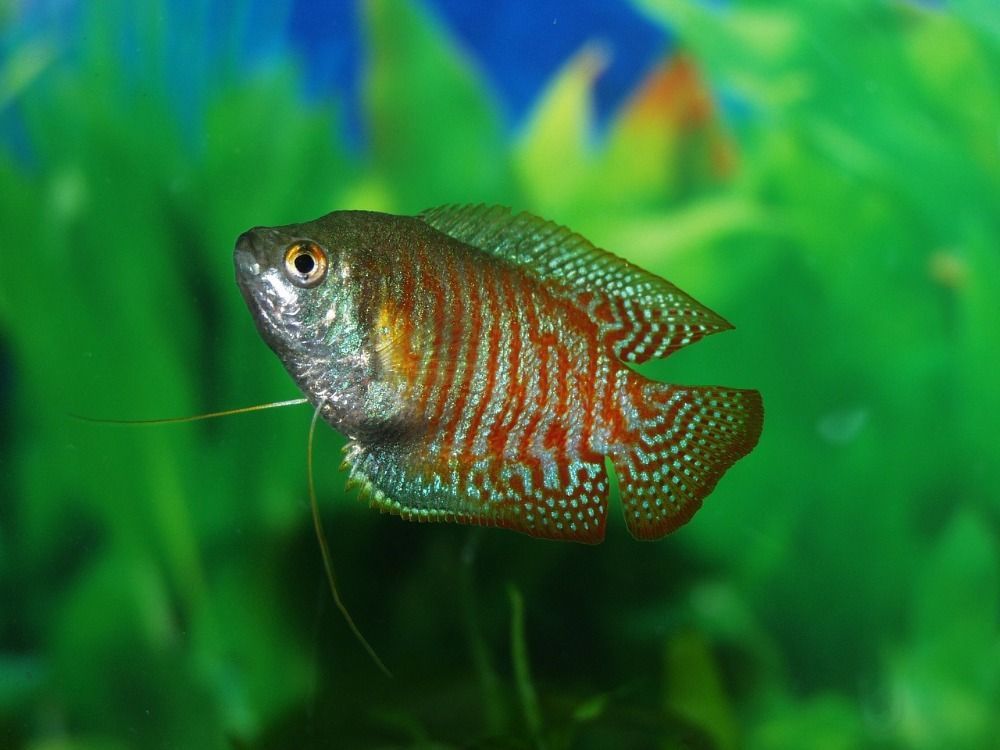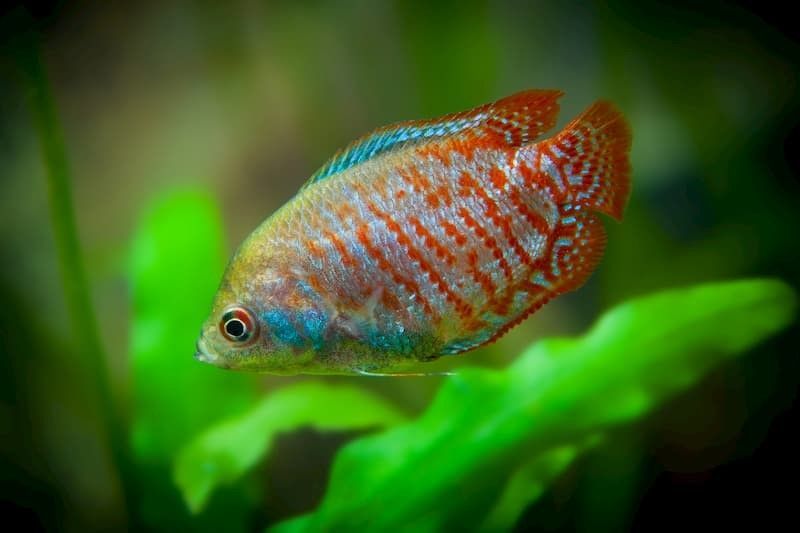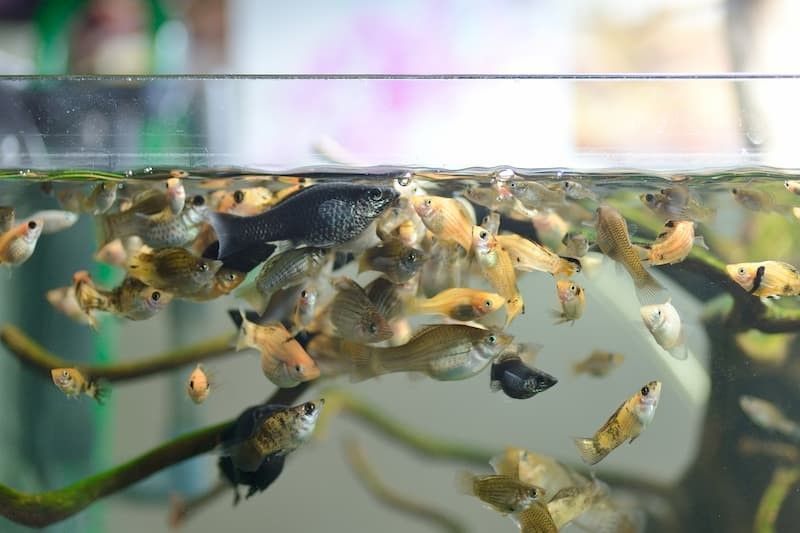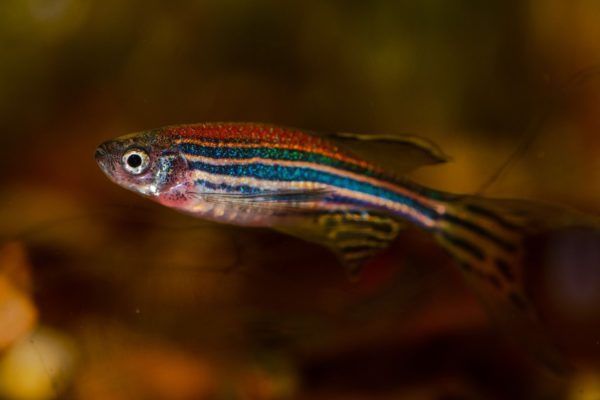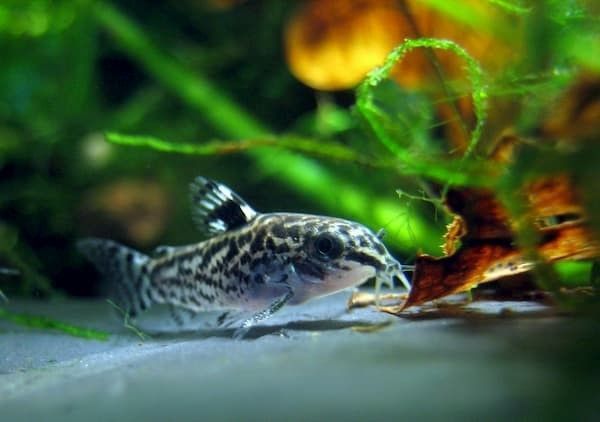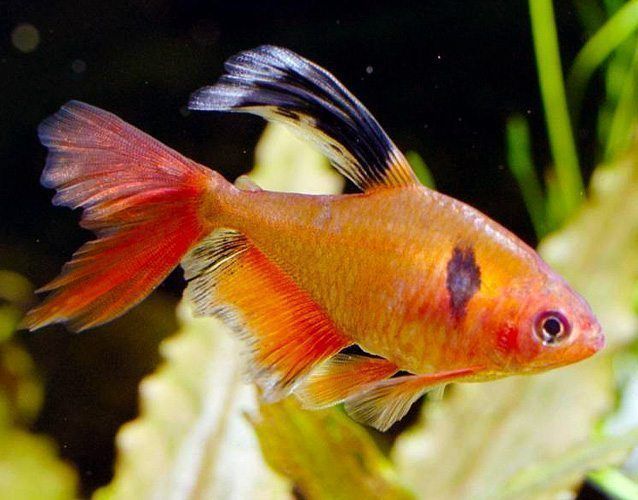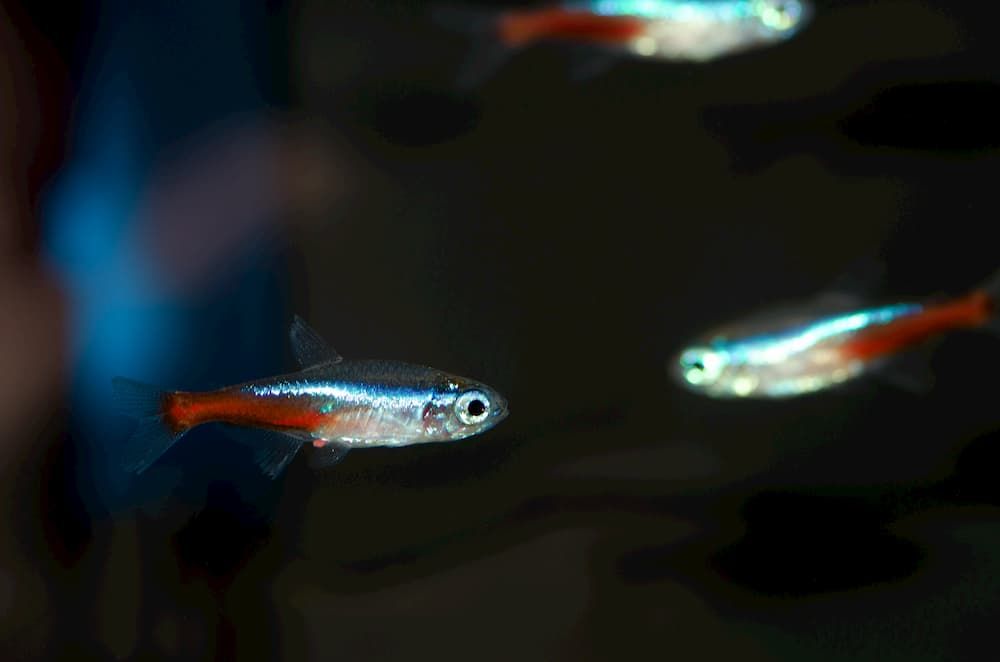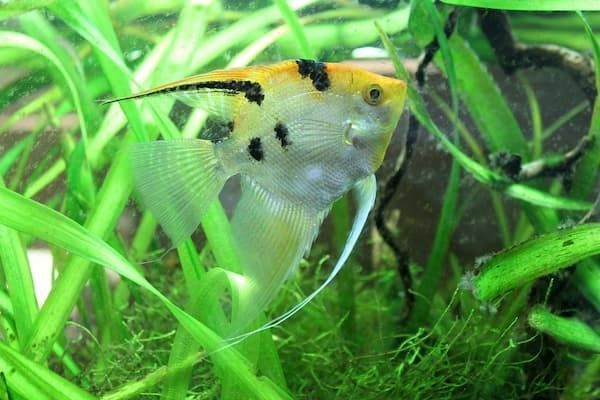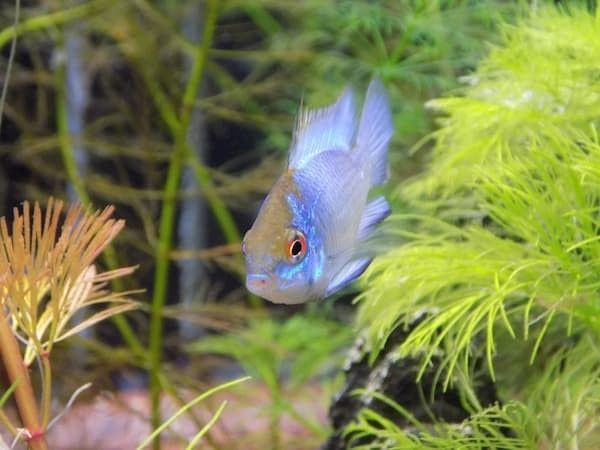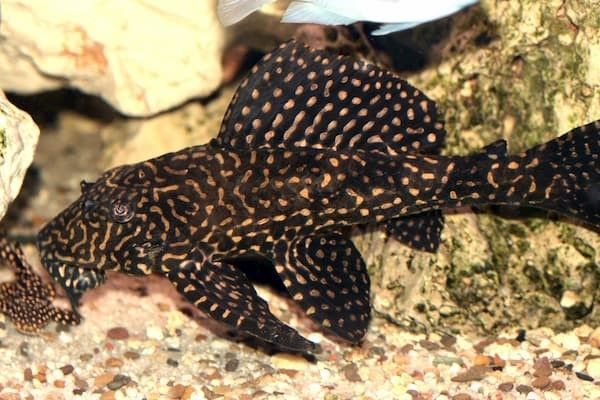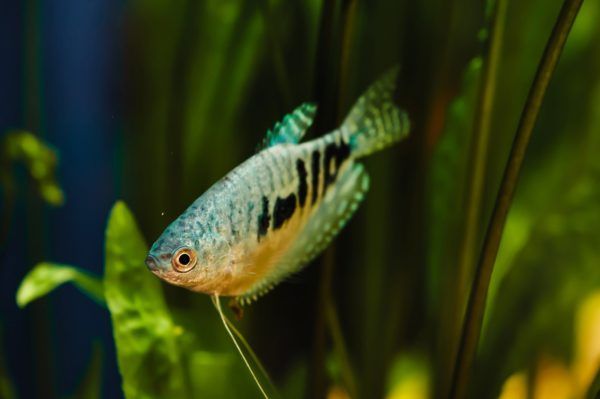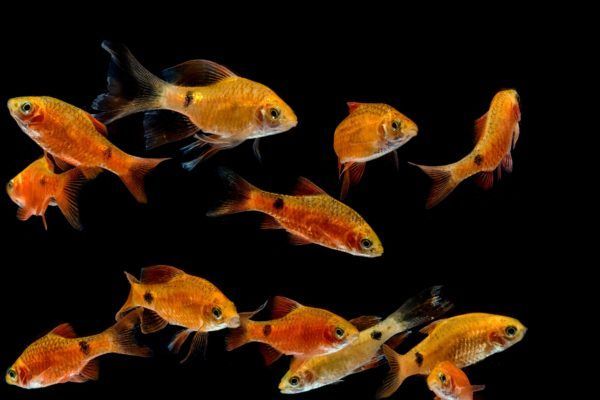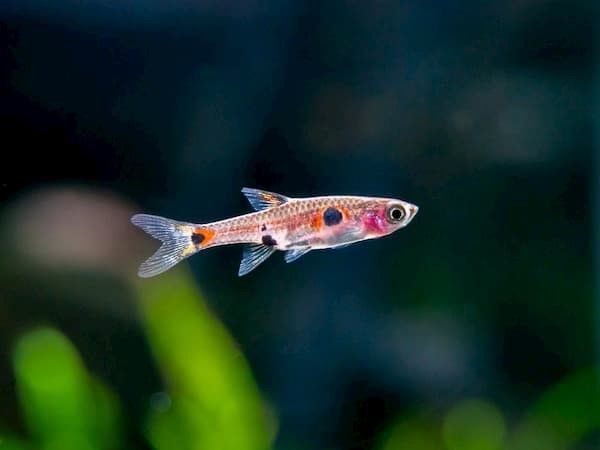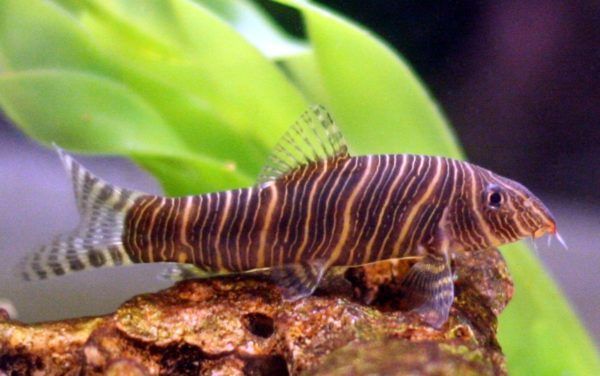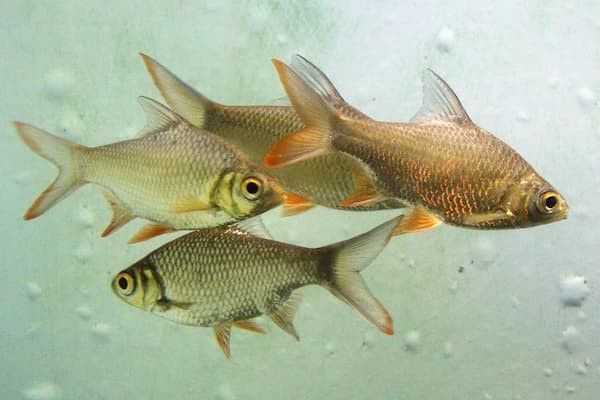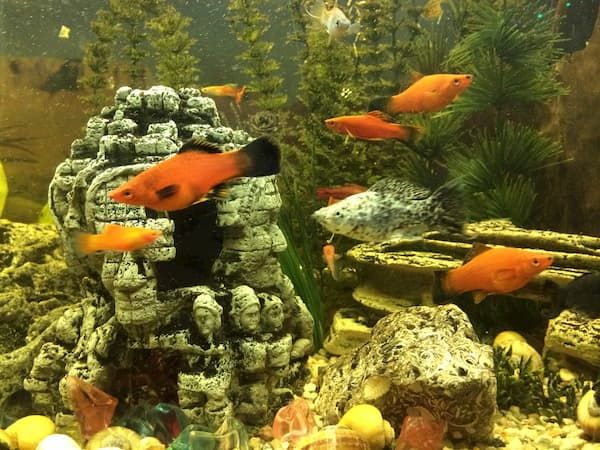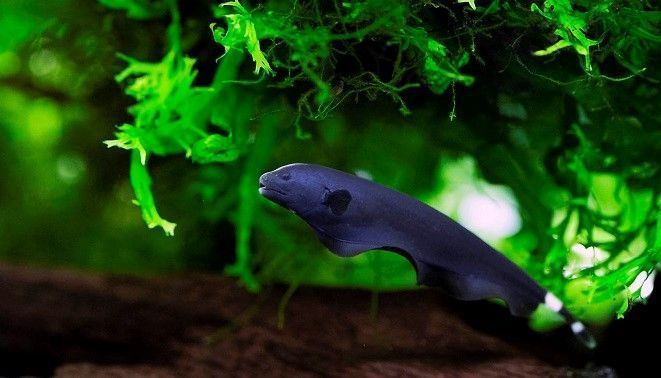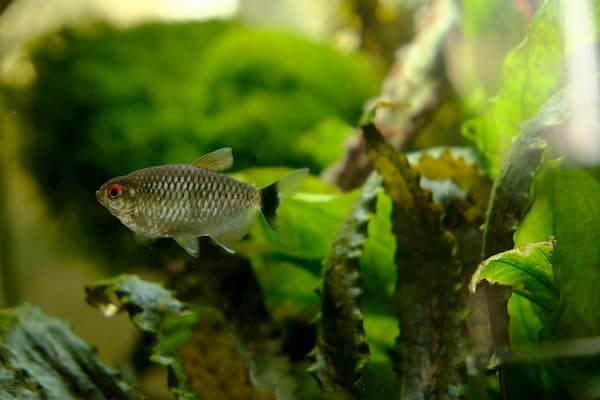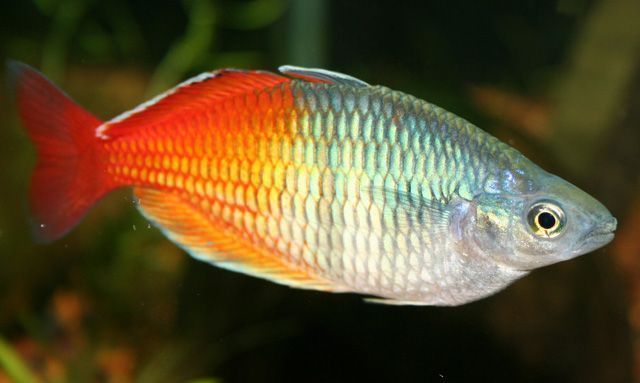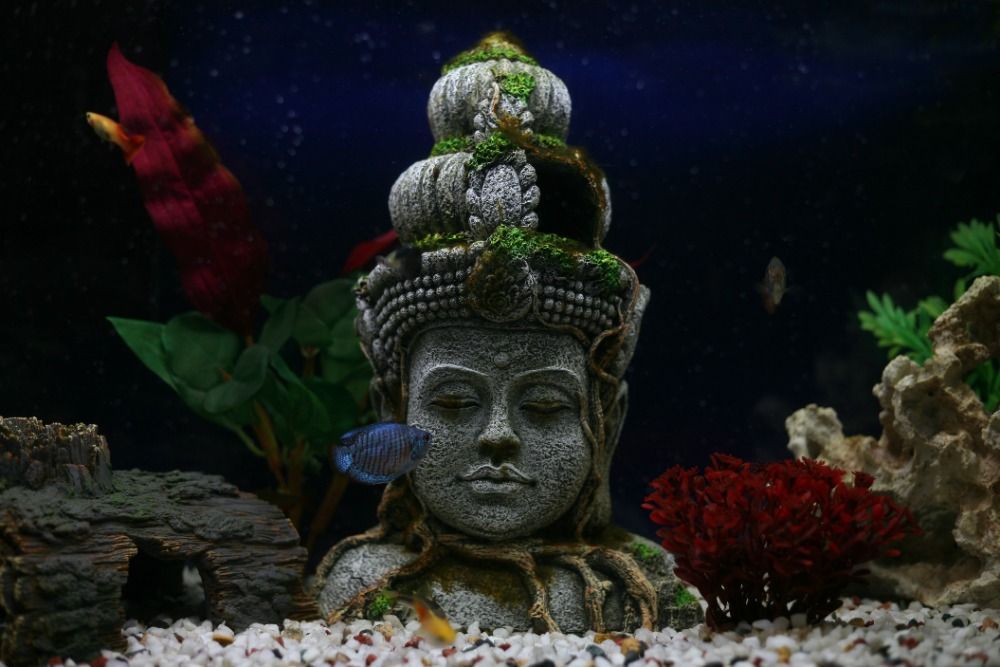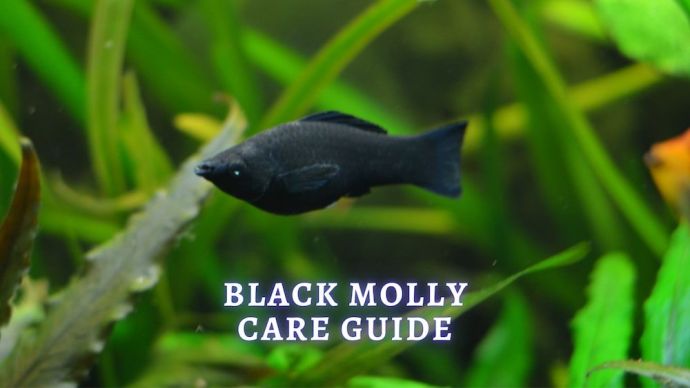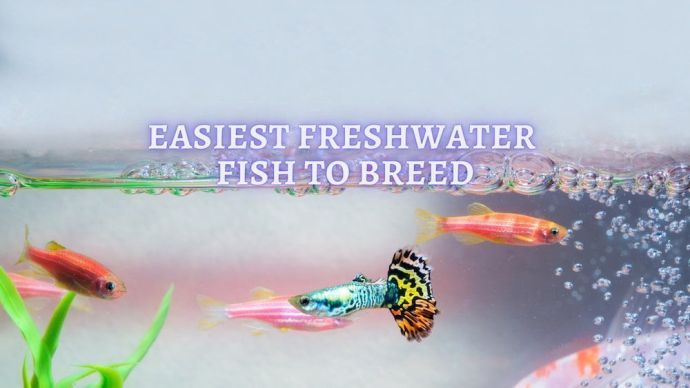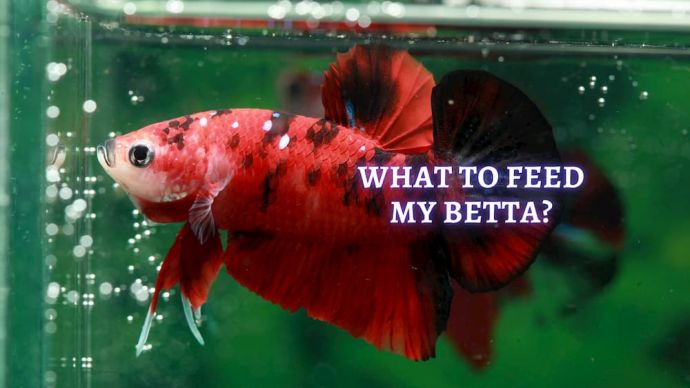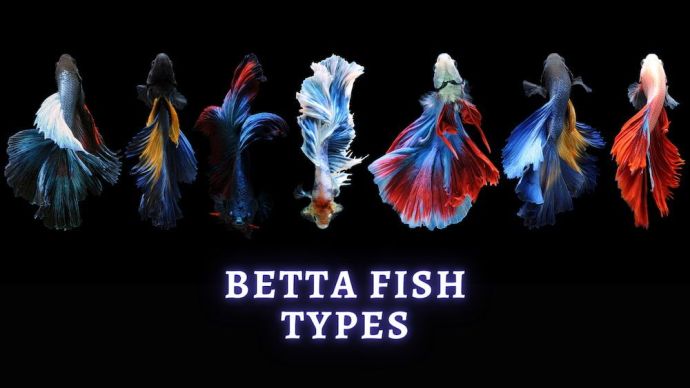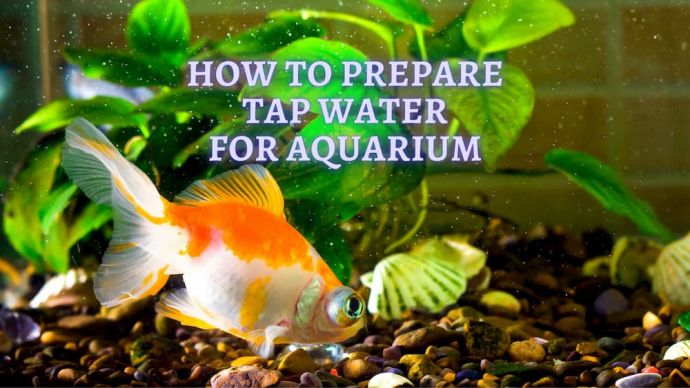Gourami Tank Mates: 20 Fish that can Live with Gourami
Written by:
Author: Vicki Smirnova
Vicki Smirnova is a professional writer and editor who adores animals and helps readers get along well with their pets. She has been working in digital media for more than 5 years and has great experience writing content about lifestyle, including pets. Vicki specializes in dog health and nutrition, cat feeding, dog training. She is an aquarium lover and is passionate to write about fish care at home. Also, Vicki headed several websites and worked as a news editor.
View all 245 articlesLearn about our editorial process and veterinary review board.
Viewed: 7862
Updated on: 07/21/2021
Gourami Overview
Gourami is a genus of tropical freshwater labyrinth fish in the family macropodae (Osphronemidae). They live in Southeast Asia (Indochina and Malay peninsulas, Kalimantan Islands, Sumatra, and Java). The Latin name of the genus Trichogaster is derived from the word “trichos” – thread and “gaster” – belly. In the more modern classification, “gaster” was replaced by “podus” — leg. Tactile mustache after a loss can recover over time.
It is one of the most popular aquarium fish. The genus includes 6 species. Name Trichogaster (having threads on the belly), and they received the rays of their pelvic fins, which serve as organs of touch in muddy water, for turning them into long threads. A few decades ago, the Amateur title “nanosec” was used even more often than “gourami”. Usually, the name “gourami” refers specifically to representatives of the genus Trichogaster. The word “gourami” in Javanese refers to fish that stick their “nose” out of the water.
Gourami is not small fish; 1 — 7 inches (17.78 cm) long. They fill large aquariums well. The body has a flat elongated shape. The body of gourami fish is flattened from the sides and slightly elongated. The ventral fin extends from the middle of the abdomen and ends with an extension near the tail. The pectoral fins are represented by long thin filaments equal to the body’s length and perform the organs of touch.
There are many gourami fish types, most common are:
- Dwarf Gouramis
- Pearl
- Blue Gourami
- Marble
- Honey
Select Neighbors for the Gourami – Things To Look For:
Gourami behaves adequately and does not offend small fish. Much more often, conflicts occur between males in the same group.
- For a long and peaceful coexistence, it is necessary to observe the sex ratio in gourami schools. There should be 2-3 females per male. If there are not enough, then violent conflicts can occur between males.
- Also, populate the tank fish that can’t fit in the mouth of large gourami. Although these fish have a calm character, they can easily swallow small fish.
- If possible, try to avoid cohabiting with closely related species. Often the male of one species takes the male of another for his rival and can also attack him.
- Gourami has insufficient contact with overly active fish, and they can bite their fins or not allow access to the surface of the water, where the gourami regularly float up to capture a new portion of air. The cohabitation of gourami with other fish from a young age makes adults calmer and more balanced.
The Best 20 Gourami Compatible Tank Mates
Here are best 20 Tank Mates for Gourami:
1. Lalia
Gourami gets along with the peaceful Lalia. Both species prefer water with similar parameters.
- Care Level: medium
- Gallons per fish: 2 — 10
- Temperature range: 25 — 27°С
- pH Range: 6,0 — 7,5
2. Mollies
Mollies are identical in size to the gourami. Males are aggressive within a species but friendly towards members of another species. Choose comfortable water for both types: mollies like the water of medium hardness.
- Care Level: easy
- Gallons per fish: 3 — 5
- Temperature range: 25 — 28°С
- pH Range: 7,5 — 8,2
3. Danio Rerio
Full compatibility with this peaceful and mobile fish. Danio fish prefer cold water. The appropriate temperature for neighbors is 71-75 F.
- Care Level: easy
- Gallons per fish: 2 — 3
- Temperature range: 17 — 25°С
- pH Range: 6,7 — 7,0
4. Catfish Corydoras
Calm and unhurried corydoras catfish can boast full compatibility with many types of fish. Corydoras live in the lower layers of water — in the upper and middle — so contact with neighbors is minimized.
- Care Level: medium
- Gallons per fish: 4 — 5
- Temperature range: 22 — 25°С
- pH Range: 6,0 — 7,5
5. Minor
Minor is a mobile and bright fish. They are well suited for keeping with gouramis due to their size, similar habitat conditions, and the ability to add color diversity to the overall aquarium. Minor has a peaceful character.
- Care Level: easy
- Gallons per fish: 2 — 3
- Temperature range: 22 — 28°С
- pH Range: 6,0 — 7,2
6. Neon
Various types of neons will indeed become excellent companions for the gourami. However, it is better to choose more significant individuals. Small blue or black neon fish are most likely to become live food.
- Care Level: easy
- Gallons per fish: 2 — 3
- Temperature range: 23 — 25°С
- pH Range: 5,5 — 5,7
7. Scalare
Massive and graceful scalars are perfectly combined with gouramis. Fish have a similar temperament and will look great together. The main thing is not to forget that large fish will need the appropriate volume of the aquarium.
- Care Level: medium
- Gallons per fish: 15 — 20
- Temperature range: 22 — 26°С
- pH Range: 6,5 — 7,5
8. Apistogramma
These peaceful and unusually bright dwarf fish will also be able to live with calm gouramis. They prefer soft and slightly acidic water; it is desirable to organize a thicket of aquatic plants in the aquarium.
- Care Level: medium
- Gallons per fish: 7 — 10
- Temperature range: 25 — 30°С
- pH Range: 6,0 — 7,5
9. Ancistrus
Ancistrus catfishes are not a threat to gourami, so you can safely put them together in a typical aquarium. Catfish will help keep the aquarium clean by eating algae growths on the glass.
- Care Level: medium
- Gallons per fish: 15 — 20
- Temperature range: 22 — 26°С
- pH Range: 6,0 — 7,0
10. Catfish Plecostomus
Catfish feed more often on plant food. Plecostomus will not harm their neighbors. Water parameters are similar; soft water is preferred and perfectly compatible with gourami.
- Care Level: medium
- Gallons per fish: 40 — 50
- Temperature range: 22 — 26°С
- pH Range: 6,2 — 7,2
READ MORE: What Fish live well with Guppies
11. Other Gurami
An aquarium that is home to several species of gourami will not be able to escape the public’s attention. Close relatives look very good with each other. However, there is a small problem. Male gourami monitors the territory of their habitat and may mistake male relatives for individuals of their species; this can lead to a fight. Therefore, after landing, be sure to monitor the behavior of your pets.
- Care Level: medium
- Gallons per fish: 2 — 10
- Temperature range: 25 — 27°С
- pH Range: 6,0 — 7,5
12. Labeo
Labeo prefers to live away from other fish. Therefore, these species are compatible only in a spacious aquarium.
- Care Level: medium
- Gallons per fish: 20 — 25
- Temperature range: 23 — 27°С
- pH Range: 7,0
13. Rasbora
Excellent compatibility with some rasbora. Settle a flock of these fish in soft, slightly acidic water. Choose large species, such as shiny, variegated, or elegant.
- Care Level: easy
- Gallons per fish: 2 — 5
- Temperature range: 23 — 28°С
- pH Range: 5,0 — 7,0
14. Botia
Botia gets along with gourami, but it is necessary to monitor the behavior of the fish if any conflict arises.
- Care Level: medium
- Gallons per fish: 5 — 7
- Temperature range: 24 — 30°С
- pH Range: 5,0 — 7,0
15. Barbs
First, we are talking about the most active representatives of Barbus: Sumatran, mutants, fire, etc. These fish differ in rates of life with gourami, but they also are characterized by a love to bite long tactile fins/antennae.
- Care Level: easy
- Gallons per fish: 3 — 4
- Temperature range: 20 — 25°С
- pH Range: 6,5 — 7,5
16. Swordsmen
Similar to barbules, they can disrupt the integrity of the fins of gourami, so it is not always advisable to plant these fish together.
- Care Level: easy
- Gallons per fish: 3 — 4
- Temperature range: 22 — 26°С
- pH Range: 7 — 8
17. Mystery Snail
Gourami is not indifferent to snails and can successfully fight shellfish by eating them. Gourami can bite off the antennae or prevent the snail from climbing up to supply air.
- Care Level: easy
- Gallons per snail: 3 — 5
- Temperature range: 23 — 25°С
- pH Range: 6,5 — 7,8
18. GhostFish
A unique feature of these fish is the lack of pigmentation in the scales, making them transparent. The fish’s size rarely exceeds 3 inches (7.62 cm), and the ghost fish has a long and narrow body. The ghost fish is a schooling fish that does better in a school of 8 to 10.
- Care Level: easy
- Gallons per fish: 3 — 4
- Temperature range: 22 — 27°С
- pH Range: 6,5 — 7,8
19. Tetras
Small and bright fish that do not require special maintenance conditions and do well in a school of 6-10. With solitary confinement, Tetras can be inactive, or on the contrary, quarrelsome and may attack neighbors in the aquarium. When a stressful situation occurs, Tetras change color from bright to paler.
- Care Level: easy
- Gallons per fish: 1 — 2
- Temperature range: 24 — 27°С
- pH Range: 6,0 — 7,0
20. Boesemani Rainbow
Peaceful, active and beautiful fish that reach 4 — 5 inches (12.7 cm) in size. The color and bright will not allow you to take your eyes off an aquarium with them swimming inside. Boesemani Rainbow are schooling fish and need to be kept in a school of 6 to 10.
- Care Level: medium
- Gallons per fish: 3 — 4
- Temperature range: 24 — 27°С
- pH Range: 7,0 — 8,0
Gourami Fish Tank Mates to Avoid
1. Cockerel Fish
Because of their character, cockerel fish do not get along well with other fish. It is also not possible for them to live with gourami in the same aquarium.
- Care Level: medium
- Gallons per fish: 2 — 5
- Temperature range: 24 — 26°С
- pH Range: 6,0 — 7,5
2. African Cichlids
Popular African cichlids are comparable to gourami in size, but it is not recommended keeping them together. Cichlids prefer different water and are extremely aggressive in protecting their territory, so calm gourami can easily fall victim to attacks.
- Care Level: medium
- Gallons per fish: 15 — 25
- Temperature range: 22 — 27°С
- pH Range: 6,0 — 8,0
3. American Cichlids
Large cichlids native to South America—astronauts, diamond cichlids, and managing cichlids—should not be kept with gourami. These large predators will continuously attack the gourami until they die.
- Care Level: medium
- Gallons per fish: 15 — 25
- Temperature range: 22 — 27°С
- pH Range: 6,0 — 8,0
4. Red Parrot
The red parrot can also harm the gourami. Although these fish look very friendly, their character is obnoxious. Due to the difference in size, parrots will quickly destroy the gourami in a general aquarium.
- Care Level: medium
- Gallons per fish: 40 — 50
- Temperature range: 27 — 29°С
- pH Range: 6,5 — 7,5
5. Goldfish
Cold-water goldfish do not mix well with heat-loving gouramis. And they can pinch each other’s fins significantly. Therefore, it is better to leave the goldfish in a separate aquarium.
- Care Level: medium
- Gallons per fish: 16 — 22
- Temperature range: 18 — 23°С
- pH Range: 6,0 — 8,0
Tips to Choose Fish compatible with Gourami
Individual Characteristics
Among the gourami, individuals with unstable character may occur. These fish forget all the boundaries of decency and attack their neighbors in the aquarium for no reason. This may happen occasionally. Watch your pets more often to detect deviations in behavior in time and to put dangerous fish away from relatives.
The Volume of the Aquarium
With some exceptions, gourami is quite a large fish, which also protect the occupied territory, so you need to have a suitably sized container. Ideally, a shared aquarium with gourami should have a volume of at least 26.5 gallons (0.1 m³).
Shelters
Be sure to take care of many shelters when keeping gourami in the general aquarium, especially if several males are living there. Constant battles are inevitable, but the weaker individual must be able to hide from the aggressor. Thickets of live plants, grottoes, rocks, and snags will help you here. You can also arrange a place with various aquarium plants, where the fish can stay at rest.
Spawning
During spawning, the aggression of the gourami may increase substantially. Therefore, it is better to organize fish breeding in a separate spawning aquarium.
Frequently Asked Questions
🐟 How big do Gourami fish get?
They can grow up to 12 inches (30.48 cm) in size, so they need a large aquarium (minimum 75 gallons (0.28 m³)).
🐠 Are Gouramis aggressive?
Male gourami is very aggressive; they can bite off the fins of other fish and disturb other fish in the aquarium.
🐡 How long do Gourami fish live?
Gourami live longer in an aquarium than in the wild. The life expectancy of gourami is 5-7 years, and with very good care and favorable conditions, they can live up to 10 years.
 Freshwater Fish 15 Best Fish for Outdoor Ponds: Best and Easiest to Take Care Of
Freshwater Fish 15 Best Fish for Outdoor Ponds: Best and Easiest to Take Care Of - 69
- 0
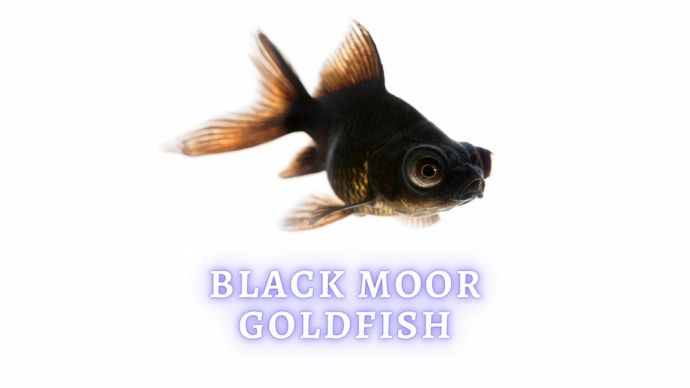 Freshwater Fish A Guide to the Black Moor Goldfish: Tank Setup, Temperatures and Care Routine
Freshwater Fish A Guide to the Black Moor Goldfish: Tank Setup, Temperatures and Care Routine - 107
- 0









